What rifle did Leo Tolstoy's Hadji Murad shoot from?
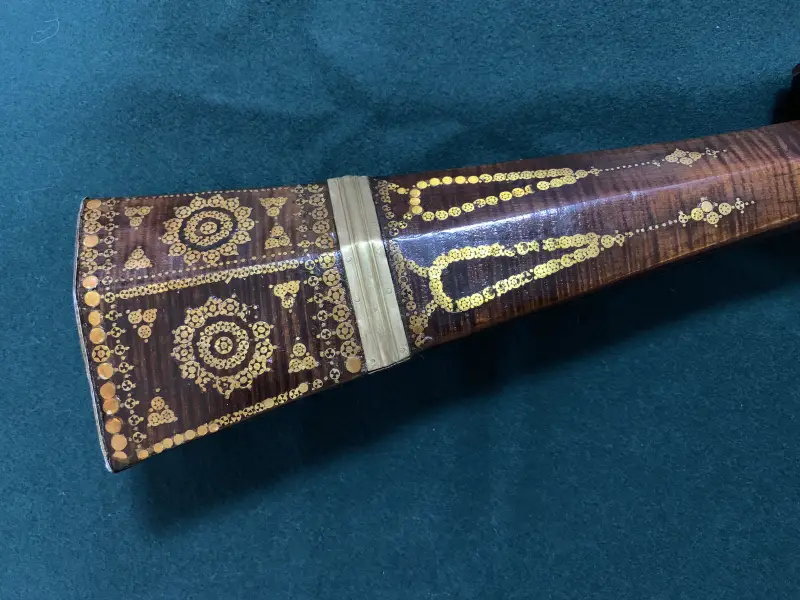
The butt of a Turkish gun from the collection of the Penza Regional Museum of Local Lore. Author's photo
and here he performed the position of servant.
He loaded the guns
which Hadji Murat and Kurban conveyed to him,
diligently driving with an iron ramrod
bullets wrapped in oiled whips
and pouring dry gunpowder from the powder onto the shelves.
Khan Magoma did not sit like others,
in a ditch, and ran across from the ditch to the horses,
driving them to a safer place,
and kept screaming
and shot from the hand without pads.L. Tolstoy "Hadji Murat"
People and weapon. I have written many times about how our whole life comes... from childhood, and in old age we, again, return to it, although on a different level. And some never return. It's up to anyone's luck.
For example, I was lucky to be in the Penza Regional Museum of Local Lore even before school, which I went to in 1962. The museum made an amazing impression on me then and for a long time determined the nature of extracurricular activities: the model of the Penza fortress forced ancient Russian fortresses with towers and towers to be made from logs rolled up from plasticine, a diorama with primitive people stoning a cave bear, brought to life its numerous imitations on the grass from moss and pieces of granite picked up on a railway embankment.
But what was especially imprinted on my consciousness then and entered my life as a separate topic was the ancient weapon. Times were simple then, and many samples of sabers hung right on the walls, and guns, although hidden under glass display cases, were not protected by any alarm, like a soldier in a grenadier miter and with a musket at his foot, standing in the corner of the hall dedicated to A.’s connections. V. Suvorov with Penza.
Then I read in the book “A Bookstore Near Place Etoile” (author N. Kalma) that, apparently, the same soldier stood in the Poltava Museum of Local Lore, and I thought that, apparently, they were mass-produced somewhere and sent to regional museums.
There were a lot of interesting things there, but for some reason the strongest impression on me was made by two clearly oriental guns.
One with some very narrow butt, which ended in a massive butt plate made of bone, and the other with a curved faceted butt, abundantly inlaid on the wood with small patterns of yellow metal.
Then, out of harm’s way, all this was removed from the exhibition, but... then a moment came, “a happy moment came,” and my meeting with them took place again, only now I knew what to look at first, and what really may mean something seen.
It turned out that both of these guns are indeed very interesting examples of firearms in all respects, which can tell a lot about themselves.
But first of all, it should be remembered that, although the principle of striking sparks with the help of a flint, which had to be struck on an iron plane (flint or flint), was known to various peoples since the beginning of the Iron Age, the idea of using flint in order to ignite gunpowder on a shelf firearms did not immediately occur to people.
And, by the way, where exactly and to whom first is unknown.
But there is evidence that in the 20–30s of the XNUMXth century, early percussion locks had already appeared in Sweden, Germany and Italy. In the countries of Northern Europe, such a lock was called “schnaphan”, i.e. “hitting trigger”: a name that well conveys the essence of its device.
However, varieties of such a castle immediately appeared, the main of which were two: Northern European and Mediterranean. In turn, its Northern European variety over time began to be divided into subtypes: Swedish, Dutch, Russian and even Karelian!
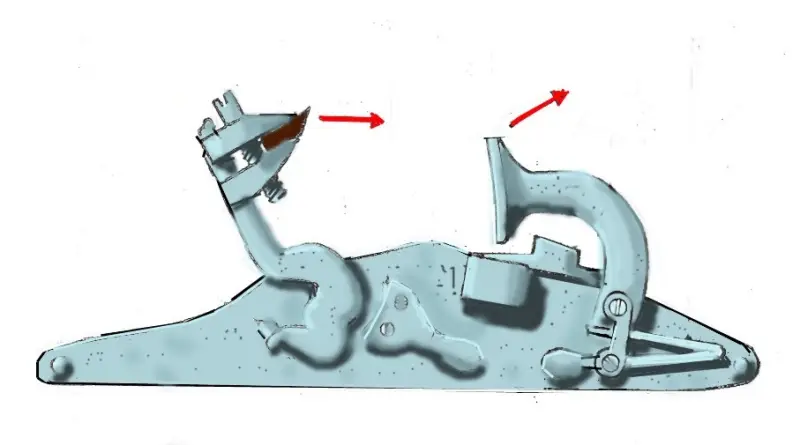
Dutch flintlock "schnaphan". Drawing by A. Sheps
Although they were all very similar and differed only in details.
The same thing happened in the south, where the Mediterranean type began to be subdivided into Spanish, Portuguese, Arabic, Turkish, Caucasian, in which, in turn, experts began to distinguish Kubachi, Circassian and Transcaucasian subtypes. Although they are all, in principle, very similar to each other and differ only in the size and shape of individual parts.
At the same time, the Mediterranean type also received the name Mikelet, under which it became mainly known.
It has a number of noticeable differences from the classic French battery lock.
Firstly, the powder shelf of the miquelet is usually covered by an L-shaped lid, which plays the role of a flint with stripes of notches on the surface, apparently serving as guides for sparks. It was supported from below by a strip or spring. The trigger spring is very wide and protrudes noticeably above the surface of the locking board. She presses on the trigger shank and thus puts it into action.
But there is one more subtle detail in this lock: a safety device consisting of a protrusion of the trigger and a safety cocking rod that extends from the lock board.
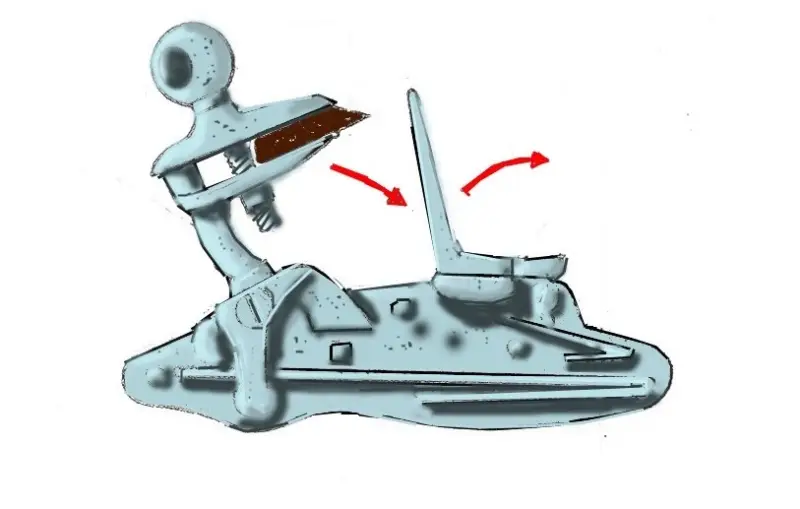
Michelet device. The square head of the safety rod is clearly visible directly under the trigger protrusion. Drawing by A. Sheps
When cocking the hammer, this rod protruding from the locking board did not interfere with this. And when you press the trigger, that is, in this case, the ball, it was retracted inside the board and did not interfere with the trigger hitting the flint cover!
The most interesting thing is that this lock was used on the same Turkish and Caucasian guns until the beginning of the 19th century, when everywhere, if not capsule locks, then, in any case, battery locks of the French type were already used.
And, of course, oriental guns, whether they were made in the Balkans or in Turkey itself (there is an inscription in Arabic on the lock), they were always richly decorated. The most expensive ones are made with silver, turquoise and corals, and the cheaper ones are inlaid with wood and metal and “notching” of metal parts, especially the lock and barrel.
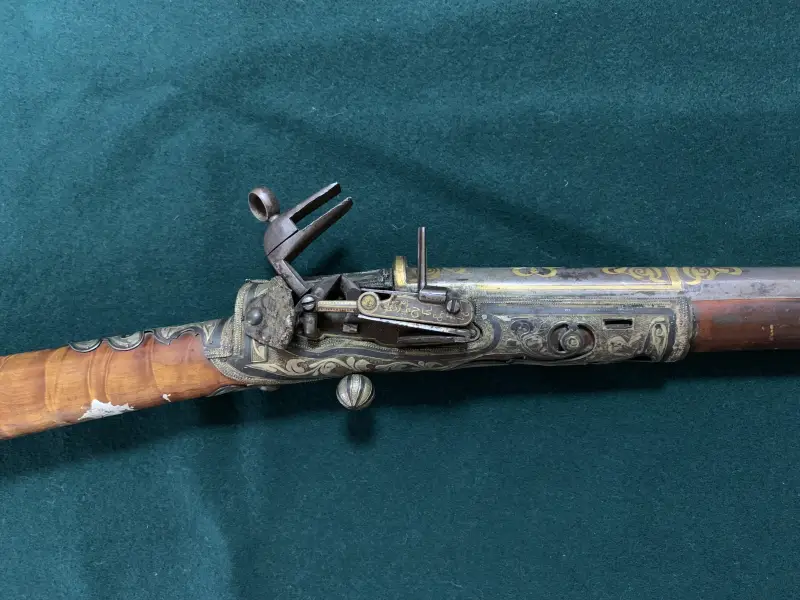
A shotgun with a Michelet lock of the Mediterranean type. The hammer is cocked. Material: steel, wood, brass, ivory. Manufacturing techniques: forging, drilling, inlaying wood with metal, “notching”. Total length 138 cm. Barrel length 108,9 cm. The barrel is rifled, faceted - 8 sides, 8 rifling. The caliber at the bottom of the rifling is 13,7 mm. The rifling field is 12,5 mm. The ramrod, the butt, and the stock are richly inlaid with brass wire. The butt plate is made of ivory. On the barrel there are inscriptions in Arabic using the “notch” technology. Penza Regional Museum of Local Lore. Photo by the author
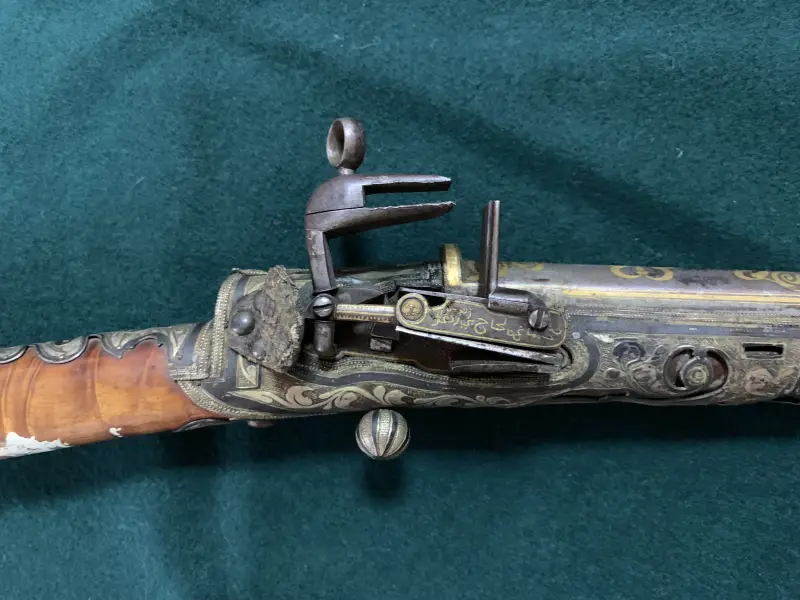
This is the same castle. The trigger is on the safety cock and cannot strike the flint without pressing the trigger. You can pull the trigger, and then the blow will occur, but it will not be strong. There won't be a shot! Therefore, first it will need to be pulled back all the way. And without pressing the trigger (in this case it’s a “ball”), he won’t be able to hit the flint
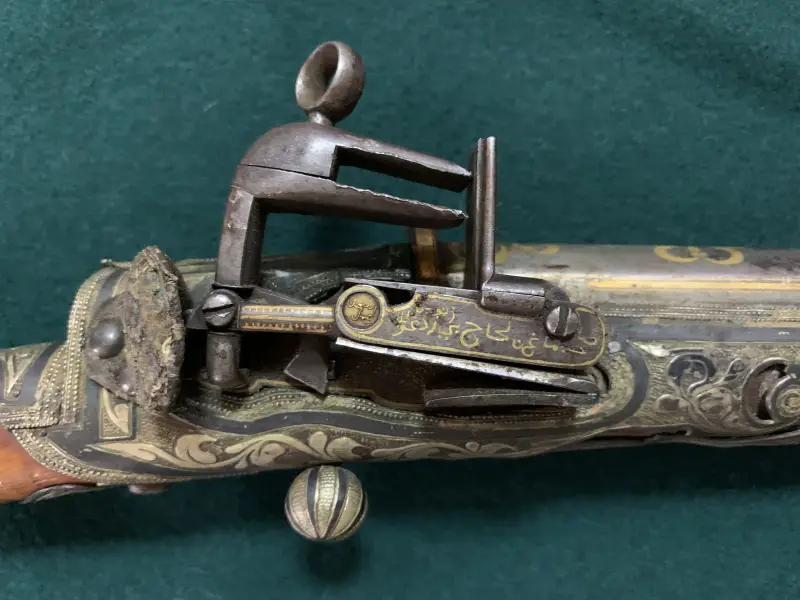
But in this photo the trigger is pulled completely. You can see the protrusion of the trigger, which presses the fuse rod inside the shelf!
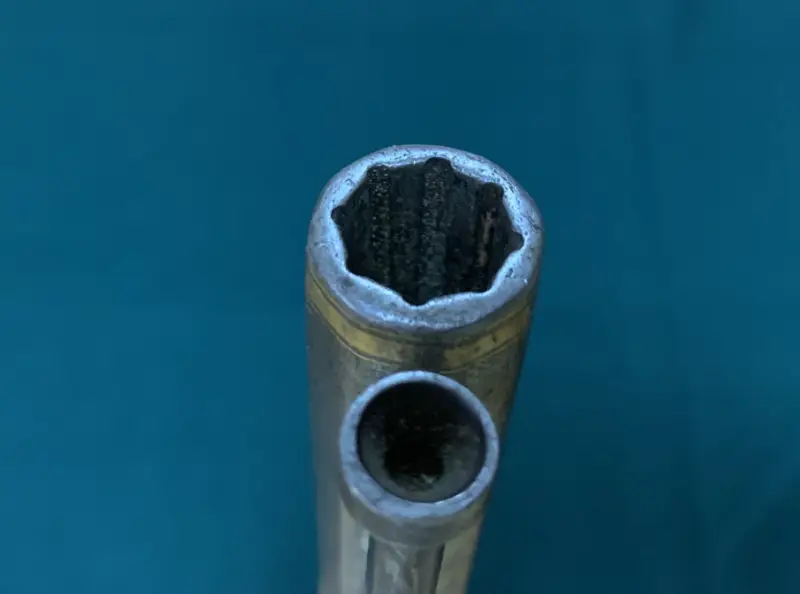
It’s interesting that what we have in front of us is not just a flintlock gun, but a rifle, that is, a gun with a rifled barrel that has eight grooves. Photo of the muzzle
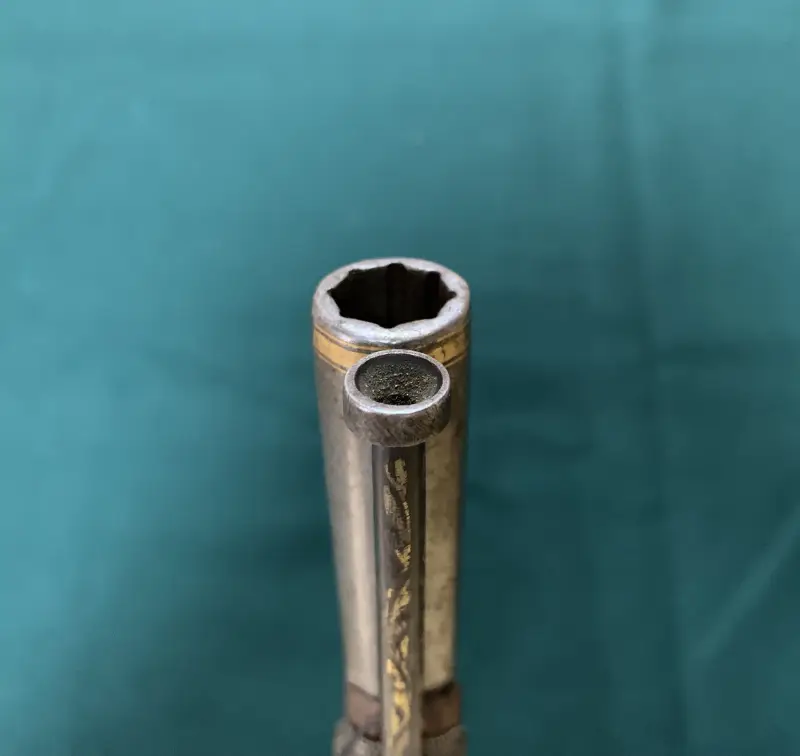
Even the metal cleaning rod of this gun is covered with a notch, that is, inlaid with metal on metal. Photo by the author
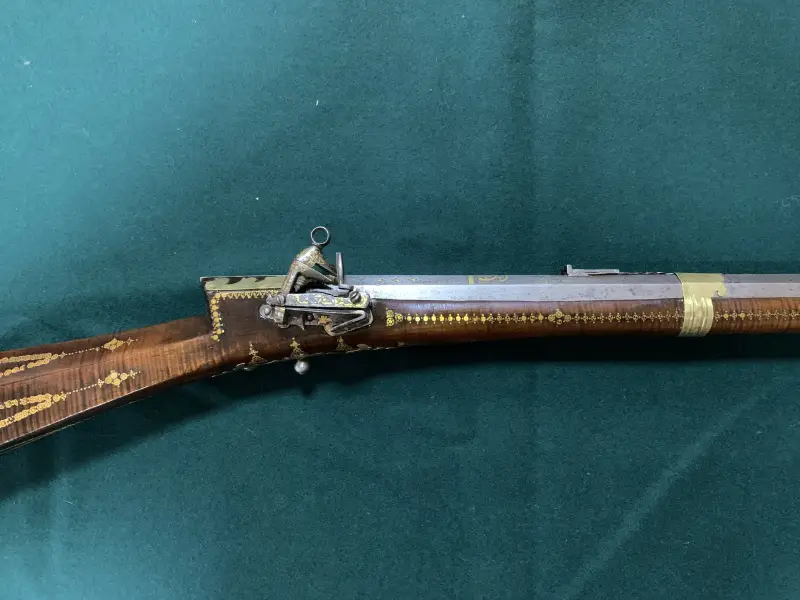
But this is definitely a Turkish gun, as evidenced by the inscriptions on its barrel, and the shape of the butt plate of the stock and its butt. Guns similar to it are kept in the Kremlin Armory and in the Artillery Museum in St. Petersburg. Time of manufacture: end of the 126,4th – beginning of the 90,6th century. Material: steel, wood, brass. Manufacturing techniques: forging, drilling, inlaying wood with metal, “notching”. Total length 8 cm. Barrel length 7 cm. The barrel is rifled, faceted - 15,5 sides, 14,5 rifling. The caliber at the bottom of the rifling is XNUMX mm. The rifling field is XNUMX mm. The ramrod is lost. The stock and butt are richly decorated with brass wire inlay. There are applied brass plates on the barrel. Penza Regional Museum of Local Lore. Photo by the author
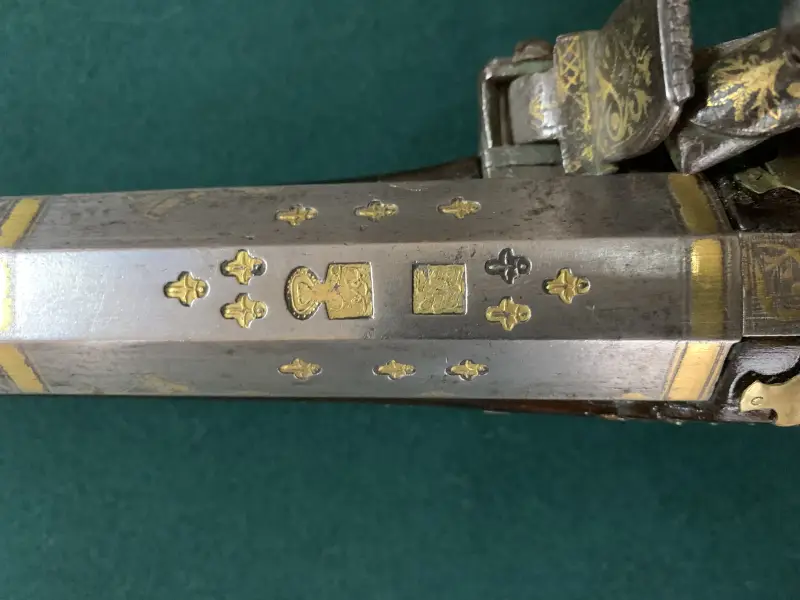
There is a mark on the barrel - a convex metal inlay, but it is difficult to say what it means. Photo by the author
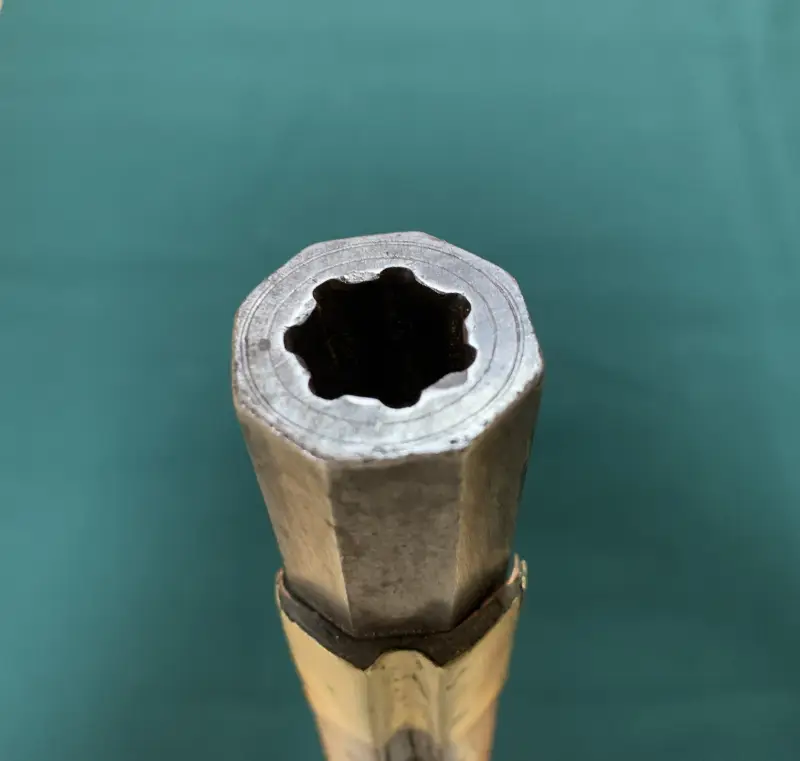
By the way, this is also a rifle! Photo of the muzzle
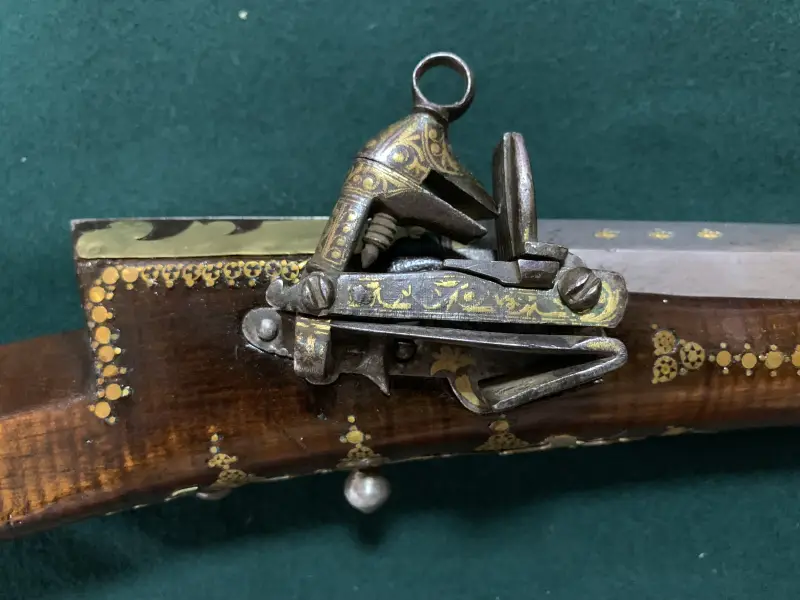
Typical Turkish castle Miquelet! Photo by the author
So, we made a short excursion to the East, to where they made such beautiful guns, and, judging by the description given in Leo Tolstoy’s book “Hadji Murad”, both he and his nukers could easily have used something like this here are guns - rifles with michelet locks!
Information